► New Mercedes-Benz GLA driven
► Baby SUV version of A-Class
► Just like a smaller GLC?
The new Mercedes GLA is a very now car: designed to hoover up buyers for whom a posh badge, a whiff of SUV-sassiness and ultra-digitisation to sync with their smartphone-driven lives is important stuff.
But if you look behind the showroom appeal, is there any substance to the latest version? Is it worth paying more for a slightly taller A-Class?
Maximum SUV proliferation!
Very much the order of the day, particularly for the lower end of Merc’s offerings. As is making use of the same ingredients to produce different results: the A-Class, B-Class, this GLA and the GLB all share the same platform underneath, range of engines, glitzy MBUX interior and relatively creaseless design. It’s just the body shape and badge that are arguably the only significant differences between them.
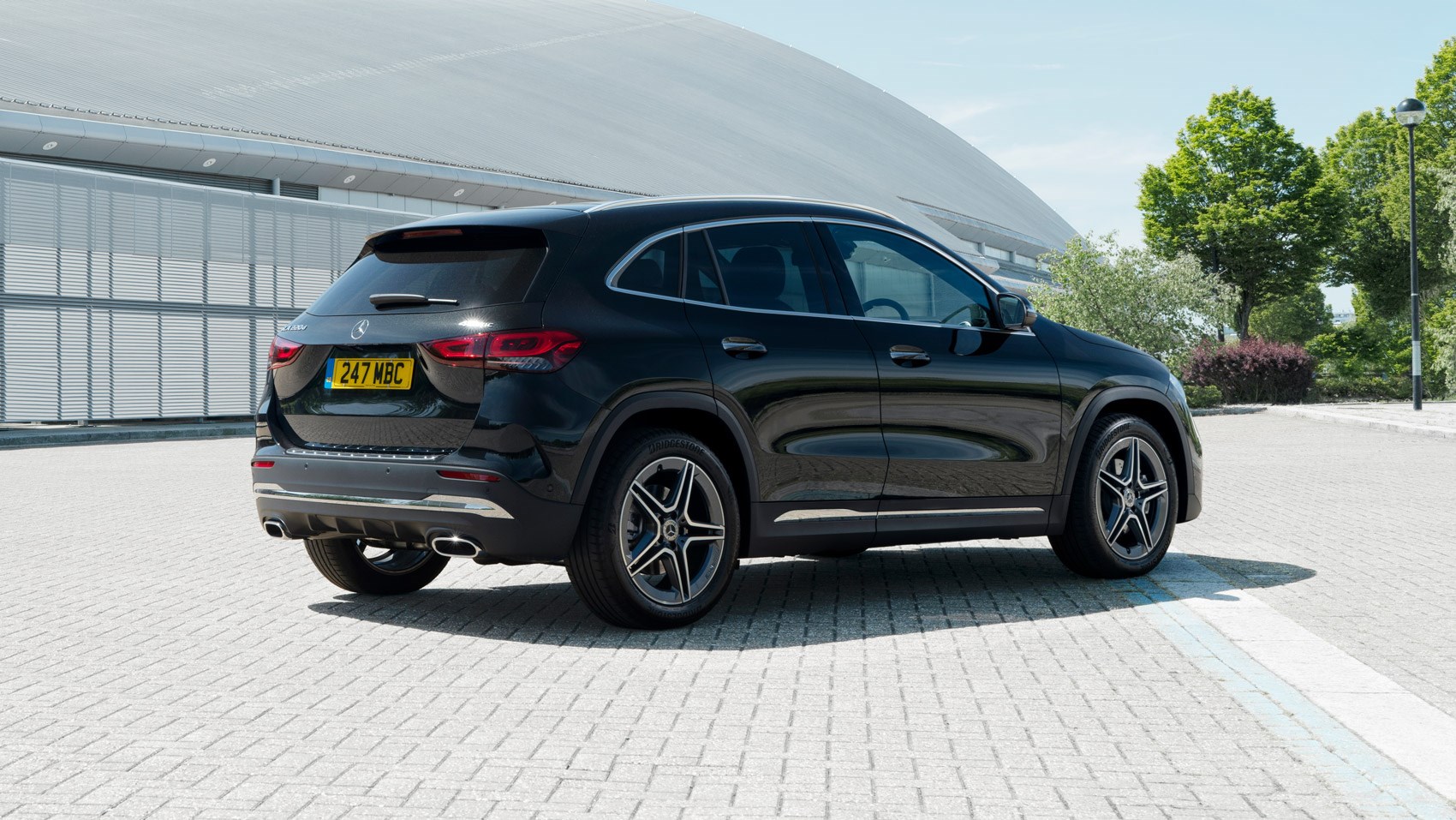
Here, with the GLA, your engine choices are a 1.3-litre petrol unit making 118bhp (GLA 200), a 161bhp 2.0-litre engine (GLA 250) and two 2.0-litre diesels good for 148bhp (GLA 200d) and 187bhp (GLA 220d). An all-wheel-drive 4Matic drivetrain is an option but a manual transmission isn’t. Like the A-Class, there’s also an AMG 35 or 45 variant, if you fancy spending £60k on a small crossover, and a plug-in hybrid badged GLA 250e.
It can’t just be ‘more of the same’, can it?
Well, if we look at the latest GLA in the context of its predecessor, that’s where things brighten up. While it’s a little shorter, this new crossover is 104mm taller and the wheelbase has extended, growing rear space in particular by 116mm.
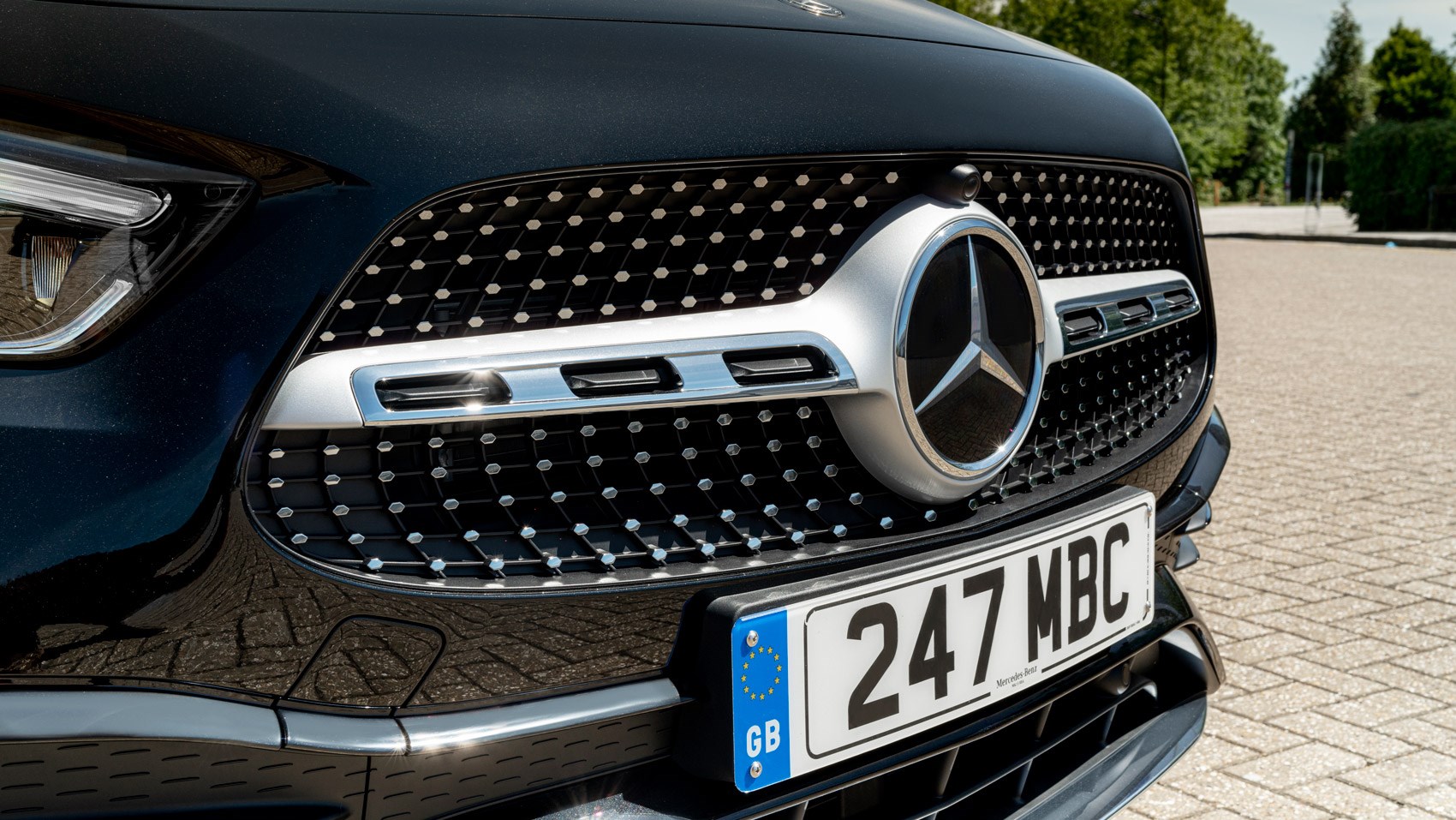
The rear seats can recline and slide fore or aft up to 140mm and, if you slide them as far back as possible, it’s at the expense of the 435 litres of boot space in the regular combustion engine variants.
Gadgets galore
The new GLA is dripping with high-tech features, possibly too many for the average Joe. Spend big, and the doors will unlock when the key carrier reaches for the handle, the Energizing Coach syncs with your smartwatch to display your heart rate on the main monitor, the seats will massage your back and the climate control can be set to perk you up and get you in the mood.
New assistance systems include warnings for Open Doors With Care (when slow-moving traffic like a cyclist approaches from behind), Route- and Traffic-Based Steering and Brake Assist and even a new Car Wash mode (deactivates rain sensor, closes windows and roof, folds mirrors).
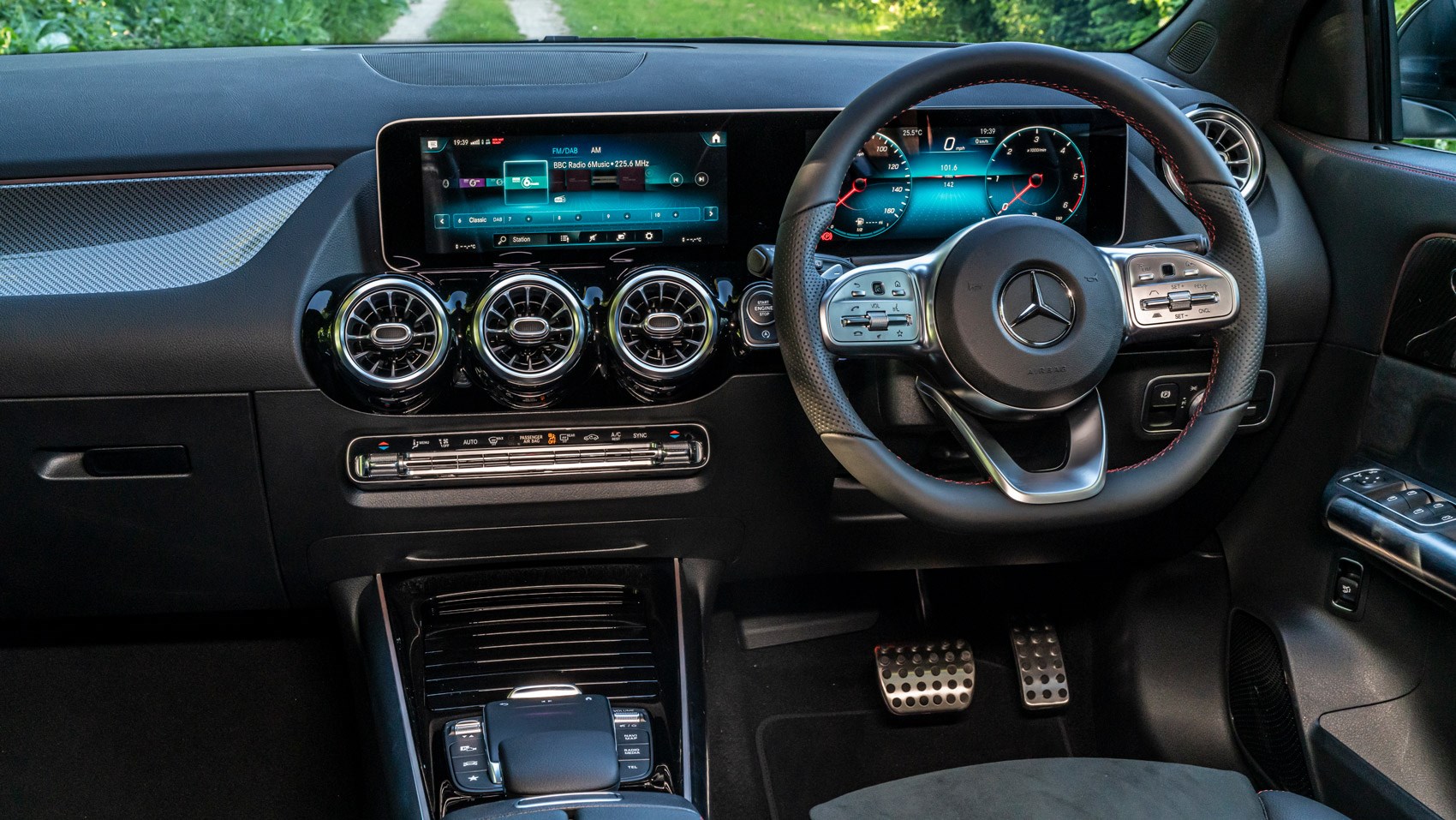
For the sake of a lower insurance rating, one must deactivate every unwanted aid afresh after every restart. Which tends to be the rule – after all, who likes randomly shaking steering-wheels, suddenly flashing door mirror triangles or loud warning beeps out of nowhere? Live with the GLA for a week, and your fingers can probably work the touchscreen like a pro.
Don’t get us wrong, MBUX is very clever. In the name of progress, the in-dash chips have developed a life of their own. When the car approaches a junction, the front camera zooms in closer to the action. Tailgating activates the rear lens (which, sadly, lacks a recording function to put the offender on film). Before arriving at a waypoint, the sat-nav fades in arrows, pointers, street names and house numbers.
What’s it like to drive?
We’ve tried the GLA 250 abroad and the GLA 220d here in the UK – the toppiest engines bar those tickled by Affalterbach that you can get on our soil.
For the 250, there’s a useful torque curve from the 2.0-litre 224bhp petrol-fed four peaking at a usefully low 1800rpm, but it falls away after 4000rpm, 2000 revs before the redline, pace increasing along with a gravelly engine note to match. A traffic light sprint to 62mph is over in 6.9sec, topping out at 149mph.
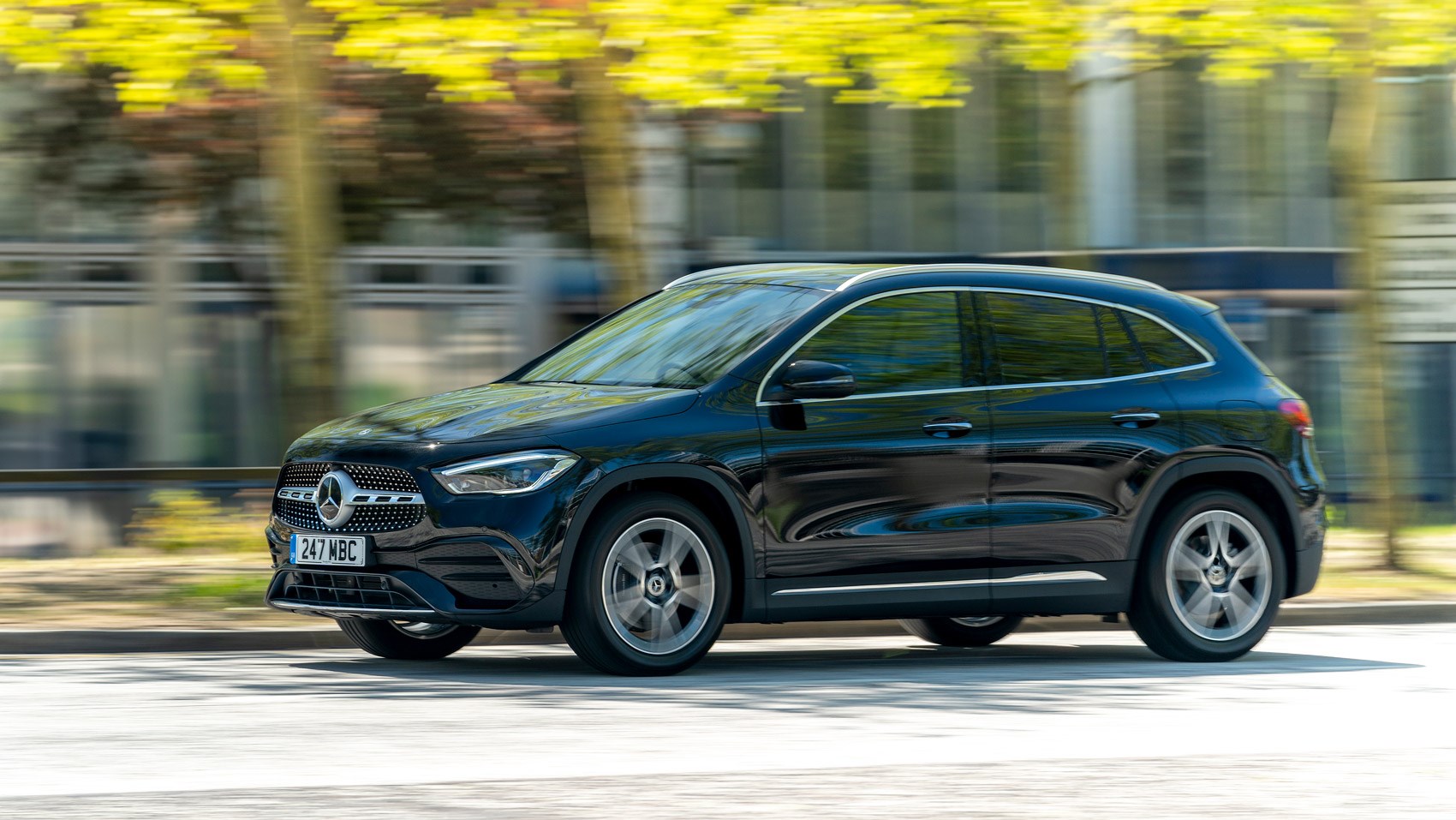
The 220d is a much thriftier affair, claiming almost 50mpg to the petrol 250’s 36, with some sacrifice of out and out pace. The engine feels like a very old-school diesel; while it’s tempered by the auto gearbox’s eight ratios, it’s a tremendously bassy and grumbly engine no matter what the revs. Newer engines from other manufacturers have managed to neuter the derv din far better than Mercedes has.
The auto features a shorter first and a taller top gear for more take-off kick and reduced high-speed consumption, but we didn’t like the flimsy column-mounted paddles which look and feel more Yugo than Mercedes. Moreover, the gearbox tuning is never quite right; in Comfort mode, the GLA is a boring companion, whereas Sport keeps hunting around the ratios in vain for the right one.
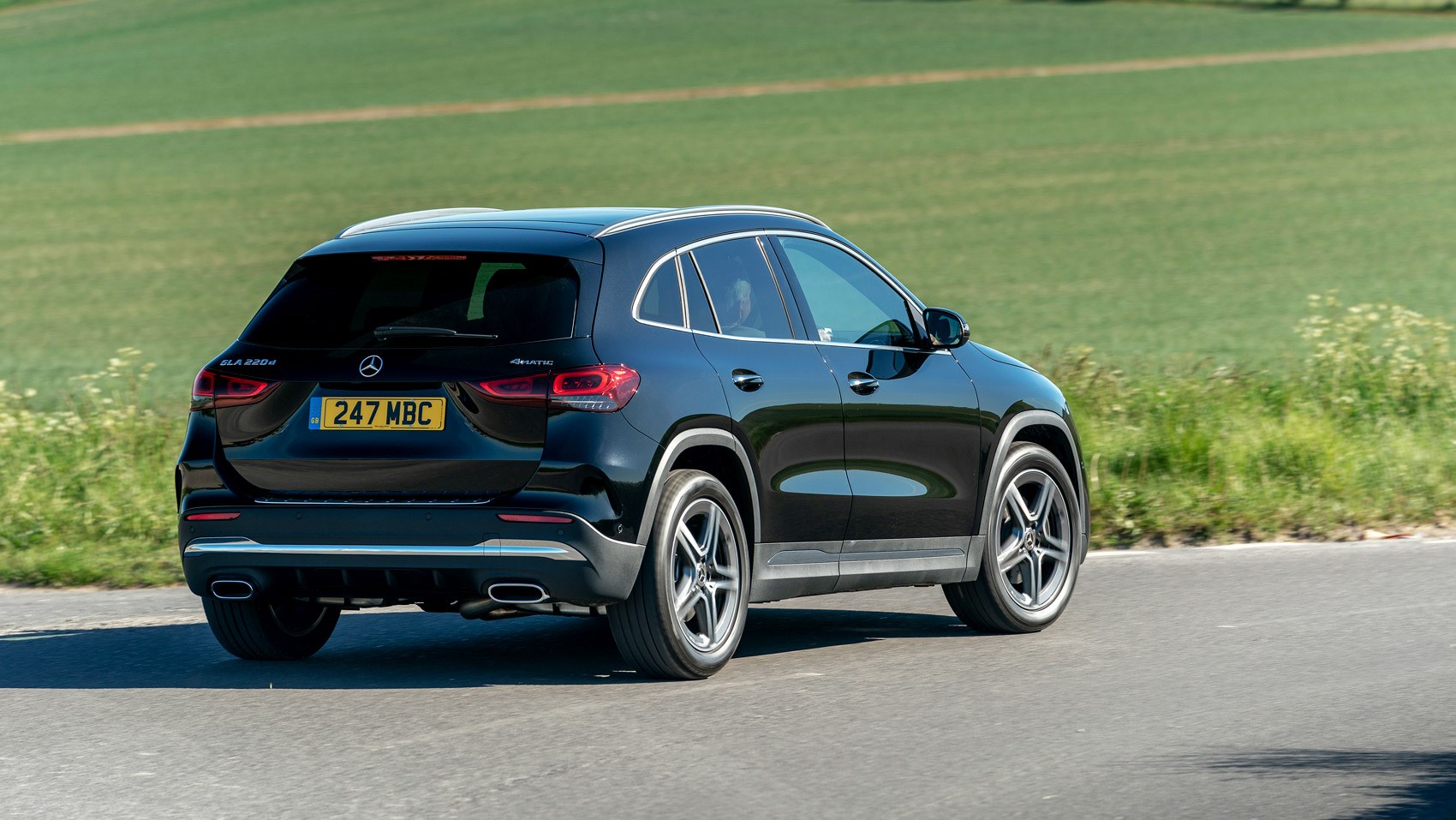
Out on the road, the GLA has a spongier ride quality than the old, super-firm set-up of its predecessor, but our advice is don’t destroy this newfound suppleness by specifying ego-boosting 20-inch rims. Everything else is just easygoing – light steering and a high-rise but comfortable driving position plenty different enough from the A-Class are the two sweetest details.
In off-road mode (if you spec the 4Matic all-wheel-drive system), power is as a rule evenly distributed between the axles. In the Individual setting of Dynamic Select, the driver can tune dampers, steering, throttle response and gearbox action to his or her personal preference.
Mercedes GLA: verdict
Good-looking and spacious and decent-ish to drive, the most (supposedly) on-trend small Mercedes actually loses out in the charm and practicality race to the new GLB. And, given the GLA’s DNA sharing with the A and B-Class, the rest is the devil you know.
Specs below for a GLA 220d AMG Line